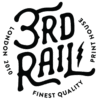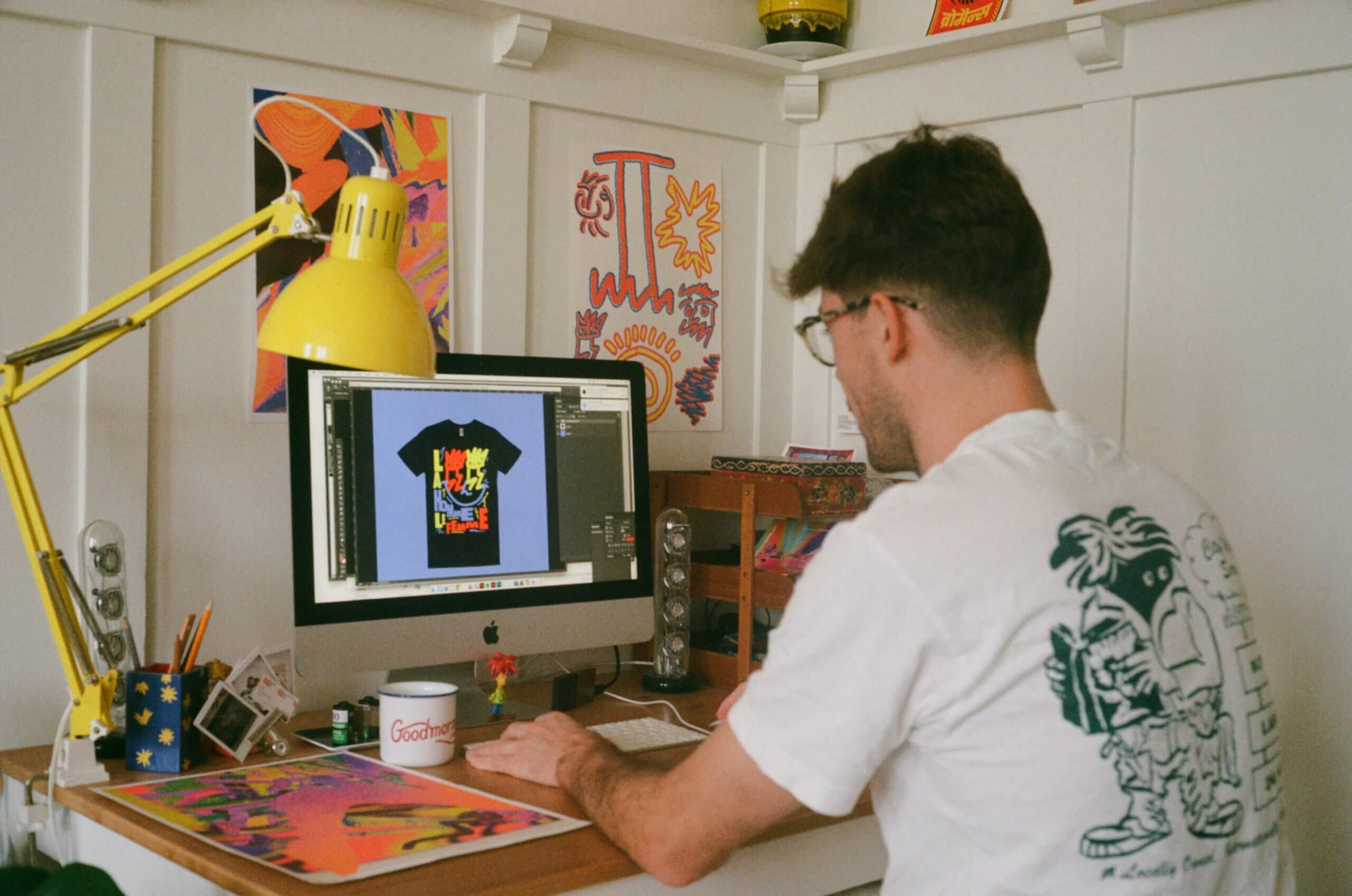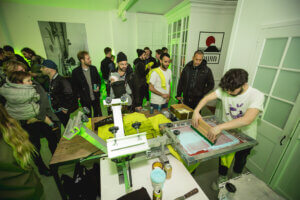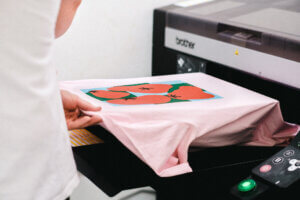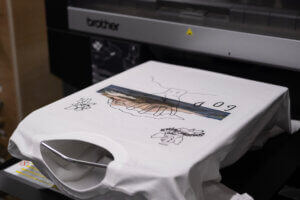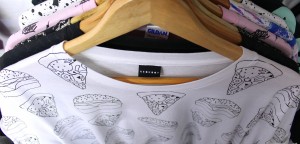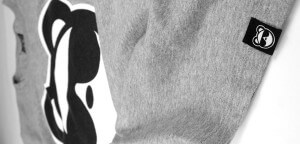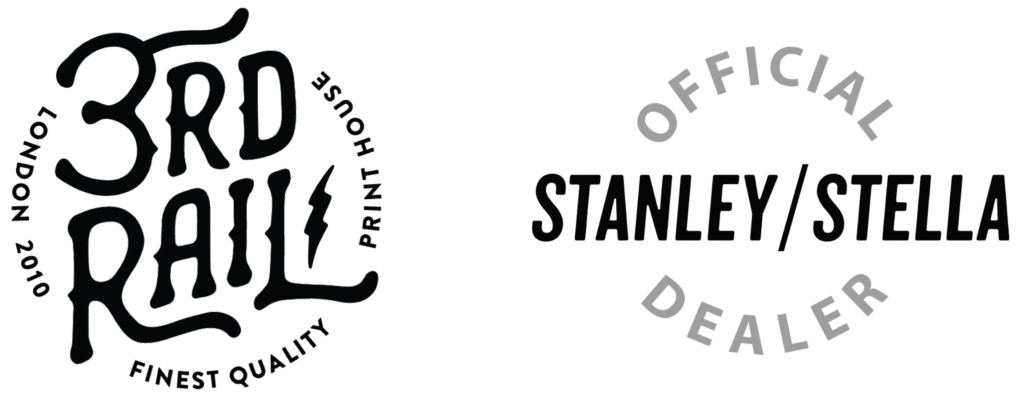The garment printing industry has come a long way since the days of traditional screen printing. Advancements in technology have opened up new possibilities, paving the way for innovative solutions like print on demand (POD). As the demand for personalised and unique clothing continues to grow, many are asking: is print on demand the future of garment printing?
In this instalment of the 3rd Rail 3 series, we’ll delve into the world of POD, compare it with traditional garment printing methods, and explore the potential impact on the industry’s future. So, grab a cup of coffee, sit back, and let’s dive into this exciting new era of garment printing!
Part 1: Understanding POD
What is POD?
Print on demand is a modern garment printing solution that allows businesses and individuals to create and sell custom apparel without the need for large upfront investments or maintaining inventory. Products are printed only when an order is placed, eliminating the risks of overstocking and wasted resources. This innovative approach to garment printing offers many benefits, such as scalability, reduced environmental impact, and the ability to offer a wide range of unique designs to customers.
Print Social and Live Printing: Innovative POD Solutions
As POD continues to gain traction, platforms and pre-sale platforms like Print Social are emerging to provide designers with an easy way to create and sell custom apparel. Print Social not only offers a user-friendly platform for launching campaigns but also promotes sustainable practices by printing only what’s needed and supporting ethical production.
Another exciting innovation in the world of POD is live printing. 3rd Rail’s live printing service brings garment customisation right to the customer, offering an interactive experience where they can watch their designs come to life. This unique approach not only increases brand exposure but also fosters customer engagement, as individuals can see the printing process firsthand and receive their custom garments on the spot.
By combining the power of POD with sustainability and customer engagement, Print Social and 3rd Rail’s live printing are paving the way for a new era in the garment printing industry.
Part 2: Comparing POD with Traditional Methods
Print on Demand vs. Traditional Garment Printing Methods
While POD offers the benefits of lower initial investments, reduced inventory risks, and the ability to scale up or down depending on demand, it’s not always the best solution for every situation.
For instance, traditional garment printing methods may still have the edge when it comes to large orders, as the per-unit cost can be lower. Additionally, some traditional methods, like screen printing, can provide superior print quality and durability for certain types of designs.
However, POD shines in its flexibility, speed, and eco-friendliness, making it an increasingly popular choice for businesses and individuals looking to create custom apparel without the burden of managing inventory or committing to large order quantities.
The Role of DTG (Direct to Garment) Printing in Print on Demand
One of the key technologies enabling the rise of POD is direct to garment (DTG) printing. DTG printing allows for high-quality, full-colour prints to be created directly onto garments using specialised inkjet printers. This technology eliminates many of the limitations of traditional printing methods, such as the need for colour separations and the high setup costs associated with screen printing.
With DTG printing, it’s possible to create detailed, vibrant designs that can be printed on demand with minimal setup time, making it an ideal choice for businesses and individuals looking to offer a wide range of custom apparel options without the constraints of traditional garment printing techniques.
As print on demand continues to grow in popularity, the role of DTG printing in shaping the future of the industry becomes increasingly apparent, offering a more efficient, versatile, and eco-friendly alternative to traditional methods.
Part 3: The Future of Print on Demand and Its Impact
Customization and Personalization: The Driving Forces
One of the main factors driving the growth of print on demand services is the increasing demand for unique, personalised products. Today’s consumers are looking for clothing that reflects their individual style and personality, and print on demand allows businesses and creators to cater to this need by offering a vast array of customisation options.
As technology continues to advance, tools like AI-powered design software are making it even easier for businesses to create custom designs that resonate with their target audience. This means that, in the future, we can expect to see even more personalised and unique products created using print on demand services.
Embracing the Print on Demand Revolution
As we’ve seen throughout this article, print on demand has the potential to transform the garment printing industry by offering a more efficient, eco-friendly, and customer-focused approach to creating custom apparel. While traditional printing methods still have their place, it’s clear that the future of garment printing is leaning towards print on demand solutions.
To stay ahead of the curve and capitalise on this growing trend, businesses and individuals should consider exploring the world of print on demand further. If you’re interested in learning more about the services and solutions offered by 3rd Rail, be sure to visit our website and contact page for more information.
By embracing the print on demand revolution, businesses and creators can not only meet the demands of today’s consumers but also help pave the way for a more sustainable, personalised, and innovative future in the world of garment printing.
Frequently Asked Questions about Print on Demand
- What is print on demand (POD)?
POD is a modern garment printing solution that allows businesses and individuals to create and sell custom apparel without the need for large upfront investments or maintaining inventory. Products are printed only when an order is placed, eliminating the risks of overstocking and wasted resources.
- How does print on demand differ from traditional garment printing methods?
Unlike traditional garment printing methods, POD does not require large order quantities or significant upfront investments. It offers greater flexibility, scalability, and reduced environmental impact, as products are printed only when needed.
- What is Direct to Garment (DTG) printing?
Direct to Garment (DTG) printing is a digital printing technology that allows high-quality, full-colour prints to be created directly onto garments using specialised inkjet printers. DTG printing plays a crucial role due to its efficiency, versatility, and minimal setup time.
- What are the advantages of POD?
Some advantages include lower initial investments, reduced inventory risks, scalability, speed, eco-friendliness, and the ability to offer a wide range of unique designs to customers.
- Are there any limitations to POD?
While it offers many benefits, it may not always be the best solution for every situation. For instance, the per-unit cost for large orders may be higher compared to traditional garment printing methods.
- What is live printing, and how does it relate to POD?
Live printing is an innovative service that brings garment customization directly to the customer during events or gatherings. It offers an interactive experience where customers can watch their designs come to life and receive their custom garments on the spot.
- How can I start using print on demand for my business?
You can explore platforms like Print Social or reach out to us here at 3rd Rail for more information on our services. By visiting our website and contact page, you can learn more about the available options and find the right solution for your needs.
